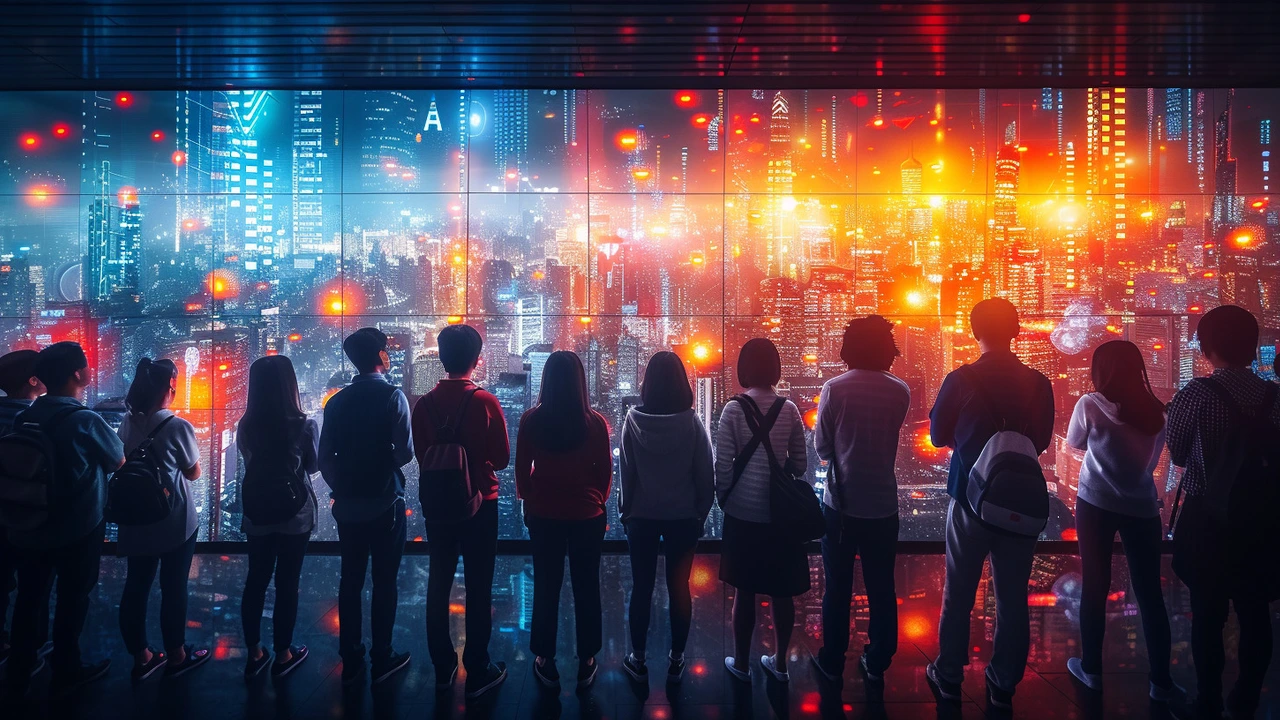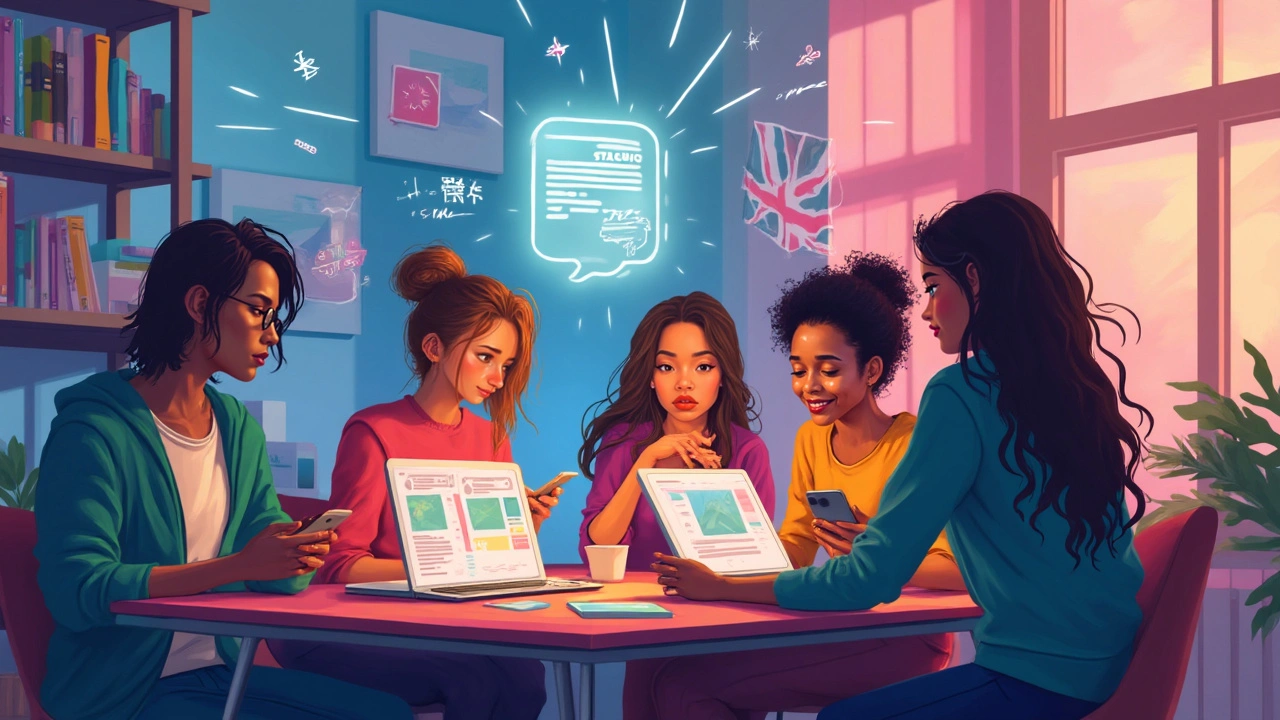ChatGPT: Redefining Content Generation for Everyone

Not that long ago, making great content meant hours of staring at a blinking cursor or hiring a team of writers. Now, a lot of that grind happens in seconds—thanks to ChatGPT. Whether you’re running a blog, writing ad copy, or putting together social media posts, the AI game has changed everything. It’s fast, it’s surprisingly creative, and it never runs out of steam.
Want to know how this tech actually helps in the real world—not just in theory? Tons of companies are powering through blog backlogs, answering customer questions instantly, and testing new ideas with wild speed. ChatGPT takes boring, repetitive work off your plate, so you can focus on the stuff that matters. Using it isn’t just smart, it’s kind of a superpower if you care about content, productivity, and keeping up online.
- How ChatGPT Changed the Playing Field
- Real-World Wins: ChatGPT in Action
- Tips for Getting the Most from ChatGPT
- Limitations and Still-Human Moments
- The Future of Content Creation with AI
How ChatGPT Changed the Playing Field
It’s almost crazy how fast things shifted after ChatGPT went live. Before, generating high-quality content meant either spending a fortune or pushing out bland, rushed articles. But now? Anyone can jump in and get blog posts, ad copy, or even emails crafted in minutes—no writing background needed.
The real game-changer is scale. Companies that used to drop thousands of dollars every month on AI writing assistants or armies of freelancers are now getting more work done for less. Some digital marketing agencies report cutting content turnaround time by up to 60%. That means more blog articles, fresher website updates, and all those social media calendars filled out faster than ever.
People aren’t just saving time, they’re also experimenting more. You can try out new brand voices, A/B test landing pages, or write a whole newsletter draft before lunch. ChatGPT basically makes the creative process less scary—if you don’t like something, you just ask the AI to tweak it. No awkward emails or endless revisions.
Here are a few specific shifts we’re seeing thanks to ChatGPT:
- Automation of repetitive content (FAQs, product descriptions, reports)
- More people without strong writing skills launching blogs or newsletters
- Lightning-fast testing of marketing copy and campaign ideas
- Better support for languages besides English, making content global
And get this: in 2024, one big survey showed that nearly 70% of marketers said AI writing tools like ChatGPT had boosted their productivity “a lot.” That’s no small bump—it’s a total upgrade for how we think about getting words onto a page.
| Task | Average Time Before ChatGPT | Average Time After ChatGPT |
|---|---|---|
| Blog Draft | 4 hours | 30 minutes |
| Product Description | 45 minutes | 5 minutes |
| Ad Copy | 1 hour | 10 minutes |
The bottom line? ChatGPT is making content generation way more accessible, faster, and, frankly, cheaper. That’s changed the rules for everyone—from solo creators to big business teams.
Real-World Wins: ChatGPT in Action
If you’ve ever wondered how ChatGPT actually works out in the wild, these examples make it pretty clear this isn’t just hype. A bunch of big companies and everyday creators are using ChatGPT to shake up the way they do content. Let’s get into what’s really happening.
Take BuzzFeed, for instance. Back in 2023, they used AI writing to pump out hundreds of personality quizzes that went viral. The speed and scale just aren’t possible with human teams alone. Even clinics and universities use ChatGPT now to write everything from newsletter copy to reports — slicing hours off their old process.
It’s not just about quantity, though. Digital marketing agencies are using ChatGPT to split-test product descriptions and ad headlines way faster than before. That means more tweaks, bigger reach, and less guesswork. Shopify stores and e-commerce brands get quick-turn product descriptions that feel unique, not copy-paste boring.
Here’s some data that shows ChatGPT’s impact in real numbers:
| Industry | Use Case | Time Saved (%) | Quality Score* |
|---|---|---|---|
| Marketing | Ad Copy Generation | 60 | 8.5/10 |
| Customer Support | FAQ Response Drafting | 75 | 8/10 |
| E-commerce | Product Descriptions | 65 | 8.2/10 |
*Quality score is an average rating by users comparing AI output vs. human-created content (reported by OpenAI and Shopify in 2024 studies).
This boost isn’t just for big brands, either. Freelance writers use AI writing tools to brainstorm or finish drafts faster. Startup teams automate everything from meet-up invites to job postings with way less sweat than before.
- Bloggers use ChatGPT to fill in outlines or repurpose old content.
- Nonprofits whip up social posts or fundraising emails in minutes, not days.
- Even students and educators lean on ChatGPT for summaries and explanations, saving them precious study time.
With so much speed and flexibility, it’s no wonder content generation looks totally different now. Tools like ChatGPT let both pros and newbies create smart, sharp stuff without the old bottlenecks.

Tips for Getting the Most from ChatGPT
Getting great results from ChatGPT isn’t rocket science, but a few smart moves can make a massive difference. If you want real value from this AI writing tool, don’t just throw out short prompts and expect magic. The magic happens when you know exactly what to ask and how to tweak.
- Be clear and specific in your prompts. If you want a list of vegan meal ideas for busy parents, write exactly that. Vague prompts give you vague results.
- Use follow-up questions. Got a first draft you like? Ask ChatGPT to expand ideas, sharpen headlines, or swap in fresher examples. It can build on its own outputs if you give good direction.
- Set the style or tone. Need casual, friendly, or strictly business? Say so in your prompt. ChatGPT can write differently for blog posts, emails, or digital marketing campaigns if you tell it how.
- Double-check facts. This isn’t Wikipedia. ChatGPT sometimes makes up details or gets things wrong, especially about recent events. A quick search check saves headaches later.
- Lean on it for structure. Stuck on how to organize your content? Ask ChatGPT for an outline, section list, or FAQs. If you’re writing a guide, let it lay out steps and then fill in details yourself.
- Edit before you post. AI is fast but not perfect. Scan drafts for grammar slips, weird phrasing, or info that doesn’t fit your audience. It’s a head start—not a replacement for your own brain.
To give you an idea of how much time you can save, a survey by Jasper in late 2024 found that over 70% of marketers using generative AI finished their first drafts 5-10x faster than before. Here’s a quick comparison:
| Task | Time Without ChatGPT | Time With ChatGPT |
|---|---|---|
| Blog Outline | 30 minutes | 3 minutes |
| Social Media Post | 15 minutes | 2 minutes |
| Product Description | 20 minutes | 4 minutes |
Nail your prompts, double-check output, and turn rough drafts into polished posts. That’s how content generation with ChatGPT actually pays off in real life.
Limitations and Still-Human Moments
Let’s be real: even though ChatGPT is a game-changer in content generation, it definitely has its limits. The biggest one is simple—it’s only as smart as the data it was trained on. If you ask it about something brand new, like a meme from last week or an event that happened this morning, it’ll just guess or get it wrong. So, if you need super fresh info or really detailed niche knowledge, a human touch still wins.
Another thing is quality control. It can give you content fast, but not every answer is fact-checked or accurate. Sometimes the AI makes things up, what experts call “hallucination.” That means you need to double-check what it writes, especially if the facts matter. It’s amazing at making drafts and templates, but letting it publish raw content is risky.
Also, you’ll notice ChatGPT doesn’t always sound natural, especially if you want your brand voice to really pop. It tries, but a real writer’s personality is tough to fake. If you need quirky humor, a sharp opinion, or deep emotional storytelling, you’ll still want a human writer to add the magic.
There are also limitations with compliance. Legal, medical, or financial posts can get risky, because the model could get details wrong or miss important fine print. Any business in these industries should see ChatGPT as a helper, not a replacement for experts. Plus, Google still cares about quality and originality, and over-automating AI writing can sometimes hurt your rankings.
Here are a few things to watch for so you avoid trouble:
- Don’t let it write unchecked final drafts—always review and edit.
- Use it for brainstorming, outlines, or quick drafts, not sensitive legal or financial content.
- Tweak the language so it really sounds like you, not a machine.
- Keep up with platform updates; new features may fix older weak spots, but also bring new quirks.
You might be surprised that a 2023 Stanford study found over 40% of AI-generated answers on complex topics had at least one factual mistake. That’s a huge reason fact-checking still matters.
| Limitation | Why It Matters |
|---|---|
| Outdated Data | Avoids giving fresh or accurate news updates |
| Potential Hallucination | May create convincing but false info |
| Lack of Personal Touch | Struggles to match unique brand voices or humor |
| No Legal Oversight | Can miss legal nuances or compliance issues |
Even as ChatGPT keeps improving, blending its speed with your own creativity is the real sweet spot for content generation. Let it handle the bulk work, but trust your human instincts for the polish and the personal parts.

The Future of Content Creation with AI
If you're in the content space, you’ve probably realized we’re not just talking about robots writing blog posts anymore. AI writing tools like ChatGPT are starting to shape not just how we create, but who gets to create. Everyone from solo entrepreneurs to big agencies are doubling their output—without doubling their workload.
Looking ahead, it’s not far-fetched to think AI will get even better at matching brand voices, nailing unique styles, and understanding complex topics. Imagine asking ChatGPT to whip up a week’s worth of fresh social posts tailored to your audience, and having it pull stats or quotes from trusted sources as part of the package. As of early 2025, OpenAI is already rolling out models that can read web pages, summarize PDFs, and turn complicated research into bite-sized, usable content.
One of the biggest upsides? Personalization—at scale. Soon, websites and marketing emails won’t just drop in your name; AI could craft messages based on your actual interests, recent clicks, and preferred language. That’s next-level customer engagement, and it’s powered by the same tech behind ChatGPT.
There are also key trends worth watching:
- Real-time content updates: AI can tweak web copy as news breaks or products change.
- Better translations: AI-led content generation is making it easier to go global on a budget.
- Voice and video: AI now writes scripts and even automatically generates captions for TikToks and YouTube videos.
Wondering what the numbers look like? Check out how fast content automation is growing:
| Year | Global AI Content Market ($B) |
|---|---|
| 2021 | 1.6 |
| 2023 | 3.5 |
| 2025 (est.) | 6.7 |
Of course, all this speed means we’ll need new ways to make sure content stays accurate and trustworthy. But if you’re keeping an eye on automation and AI writing, there’s never been a better time to experiment—and maybe even rethink your workflow from the ground up.



